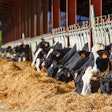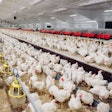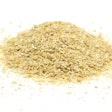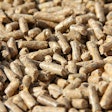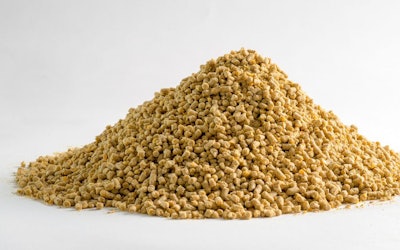
Some feeds can be formulated without adding inorganic phosphates, but others cannot
Any supplier of feed phosphates would say they cannot formulate feed without inorganic phosphates. In contrast, all phytase suppliers would say they can. They would be both be doing their jobs, but where does this leave the rest of us? As usual, somewhere in the middle, where the truth always is to be found.
So, long story short, there are some feeds and that can be formulated without any addition of inorganic phosphates and others that cannot. That sounds simple, but it is not equally simple to identify which feed falls in each category. Plus, normal (commercial) phosphorus levels have always been rather high, but for this discussion I will assume we want to use the minimum levels as suggested by NRC publications. You may disagree, but I must take into account the triple price we now have to pay for phosphates compared with just months ago.
A typical corn-soy diet contains about 0.20% phytate phosphorus (not total, just the one not available to the animal). This is the phosphorus that is being targeted by the commercial enzyme phytase. A single dosage releases about 0.1% (or 50%) of that phosphorus, and a second dosage will release another 0.05% for a total of 0.15%. Beyond that, it is doubtful if the economics justify mega doses of phytase for miniscule gains in available phosphorus.
Another solution is to use ingredients rich in phytate phosphorus so phytase has ample substrate to act upon, releasing more phosphorus. This is an interesting proposition, as with certain ingredients we can reach between 0.30% and 0.40% phytate phosphorus. Whether it is economically feasible to try to release such phosphorus is a matter of discussion with each phytase supplier, but from a biological point of view, it is certainly feasible.
Thus, the original question becomes one of having enough phosphorus released to cover the animal needs, which are already overestimated. As mentioned in previous blogs, my MSc thesis at Kansas State University focused on removing phosphates from finishing pig formulas – without any problems. Nowadays, there is research that proves the same can be done from Day 1 in broilers if feeds contain enough phytate phosphorus and high(er) levels of phytase.
So, in my opinion, it is possible to formulate diets for pigs and poultry without inorganic phosphates given we can satisfy their real requirements for available/digestible phosphorus. Here is where we need to place more emphasis in determining these requirements with even greater accuracy.





